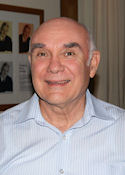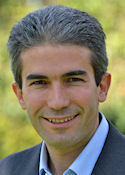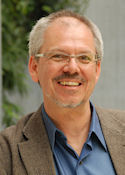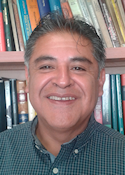Experience Gained with Model Predictive Control in Applications: Industrial Electronics and Medicine
 Graham Goodwin
Graham Goodwin
Miércoles 15 de octubre, 2014
08:30 -- 09:30
Krystal 2, MiP-1.1
Resumen: This talk will overview experience gained from applying Model Predictive Control to several real world problems including Industrial Electronics and Medicine. Two particular problems will be examined in detail, namely, harmonic suppression with nonlinear delay compensation for inverters and control issues associated with the development of an artificial pancreas for type 1 diabetes. These applications lead to interesting research questions such as the impact of nonlinear behaviour and the use of feedforward in model predictive control.
Semblanza: Graham Goodwin obtained a B.Sc (Physics) 1965, B.E (Electrical Engineering) 1967, and Ph.D, 1971, from the University of New South Wales. He is currently Professor Laureate of Electrical Engineering at the University of Newcastle, Australia and is Director of The University of Newcastle Priority Research Centre for Complex Dynamic Systems and Control. He holds Honorary Doctorates from Lund Institute of Technology, Sweden and the Technion Israel. He is the co-author of eight books, four edited books, 218 international journal papers and 330 refereed international conference papers. He has presented 60 Keynote Addresses at major international conferences. Professor Goodwin is the recipient of Control Systems Society 1999 Hendrik Bode Lecture Prize, a Best Paper award by IEEE Transactions on Automatic Control, a Best Paper award by Asian Journal of Control, and 2 Best Engineering Text Book awards from the International Federation of Automatic Control in 1984 and 2005. In 2008 he received the Giorgio Quazza Medal from the International Federation of Automatic Control, in 2010 he received the IEEE Control Systems Award and the Nordic Process Control Award. In 2011 he received the Asian Control Association Wook Hyun Kwon Education Award, and in 2013 he received the Rufus Oldenburger Medal from the American Society of Mechanical Engineers. He is a Fellow of IEEE; an Honorary Fellow of Institute of Engineers, Australia; a Fellow of the International Federation of Automatic Control, a Fellow of the Australian Academy of Science; a Fellow of the Australian Academy of Technology, Science and Engineering; a Member of the International Statistical Institute; a Fellow of the Royal Society, London and a Foreign Member of the Royal Swedish Academy of Sciences. Professor Goodwin is a Distinguished Professor at Harbin Institute of Technology (China), Northwestern University (China), Zhengzhou University (China) and Universidad Técnica Federico Santa María (Chile). He has successfully supervised 38 Ph.D. students, all of them hold senior positions in major international universities and industry. He holds several research grants covering diverse areas including Power Electronics, 3G and 4G Mobile Communications, Ambulance Scheduling, and Artificial Pancreas development. He holds 16 International Patents covering rolling mill technology, telecommunications, mine planning and mineral exploration.
 Francesco Bullo
Francesco Bullo Frank Allgöwer
Frank Allgöwer Joaquín Álvarez Gallegos
Joaquín Álvarez Gallegos Perry Y Li
Perry Y Li
 Gerardo Espinosa Pérez
Gerardo Espinosa Pérez